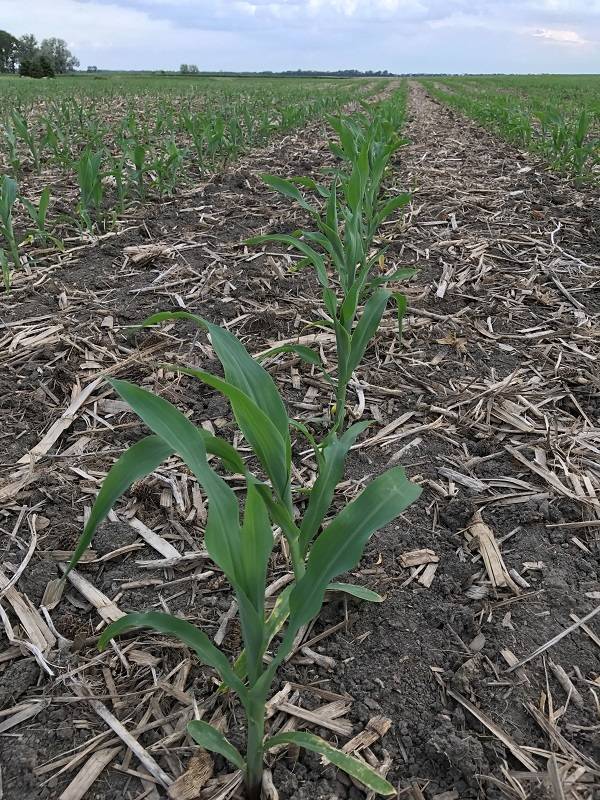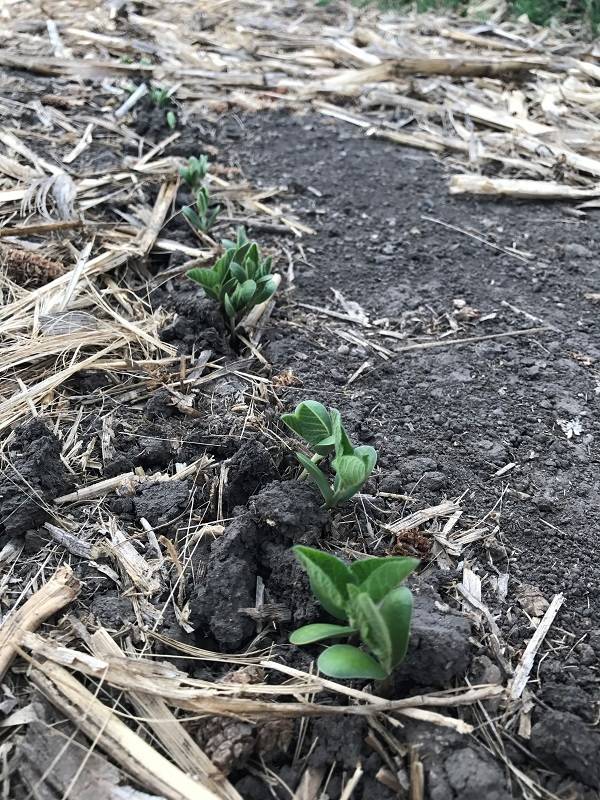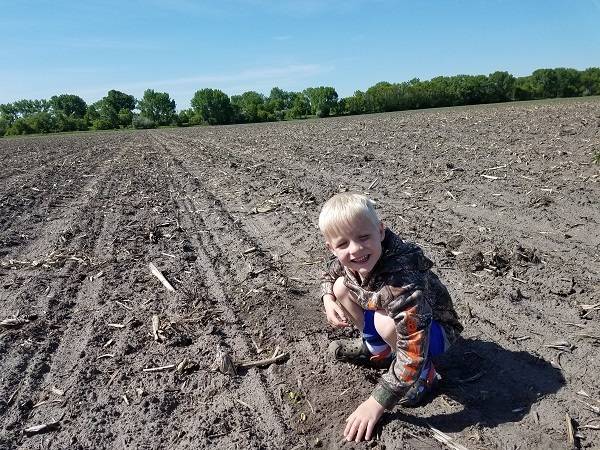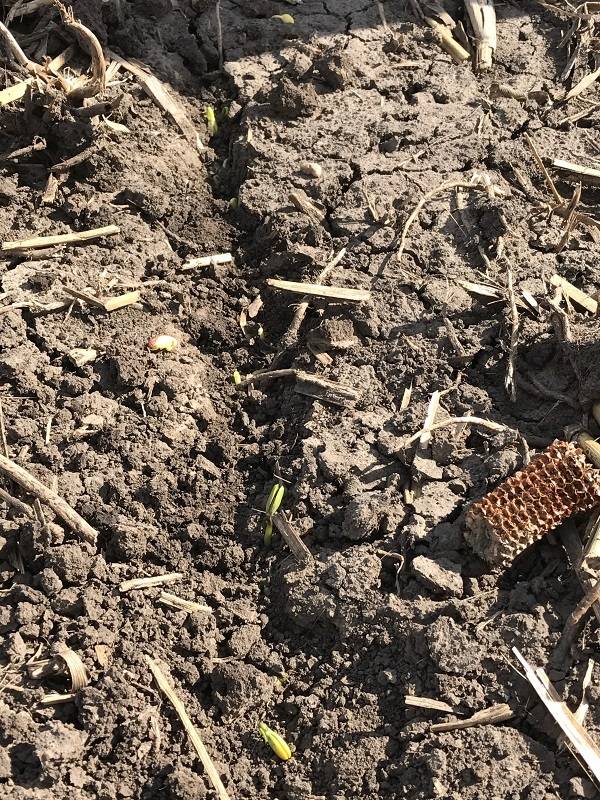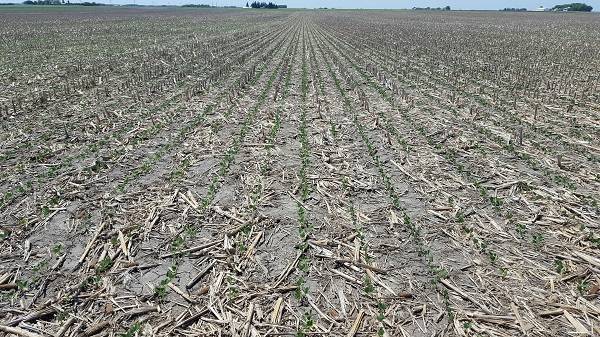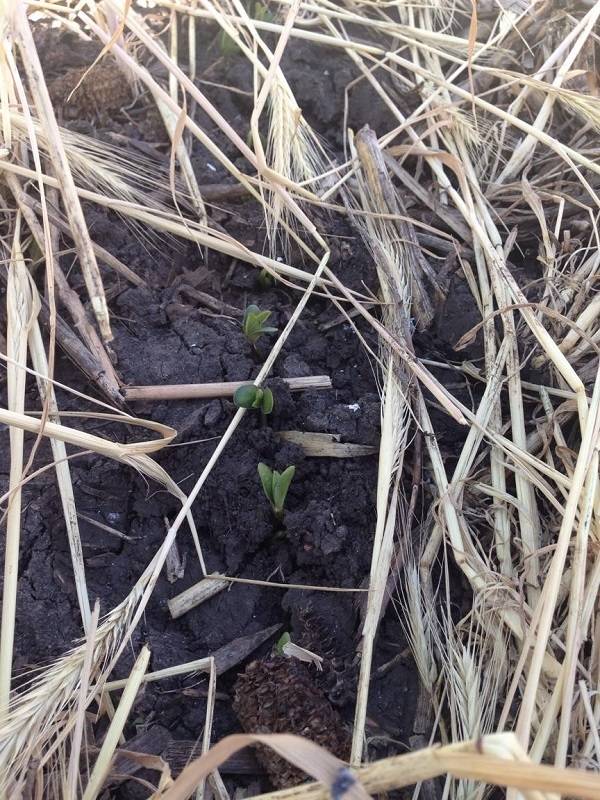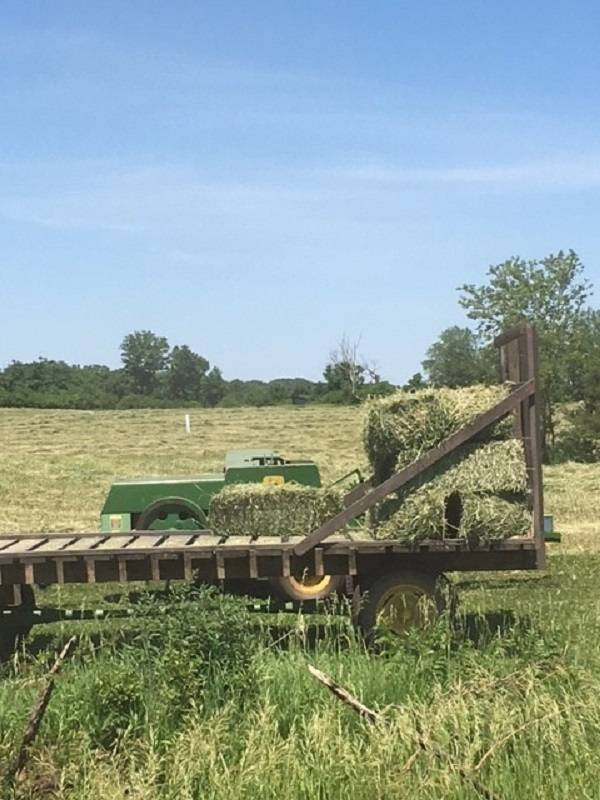Eastern North Dakota
Brain McNamee
We talk about the importance of field-by-field placement, and here’s a textbook example. I was driving around my territory when I saw this field and stopped to visit with the farmer about his situation.
Given the weed pressure in this field, different soybean seed technology should have been used. One advantage of working with independent Latham Hi‑Tech Seeds is that we sell all technology platforms, so we can work with farmers to help them chose the best system for a given situation.
If this particular farmer could have a do-over, he would have selected a different pre-emergence herbicide. A full quart of Powermax® and Authority® Assist did nothing to this marestail. Fortunately, an agronomist found a recipe to take care of 90% or better of these glyphosate-resistant buggers.
Northeast South Dakota
James Keltgen
Rain has yet to fall in the areas where it’s needed the most. Rain is desperately needed as both corn and soybeans have yet to emerged due to dry soils. In areas that received moisture, the heat is moving corn development along. Soybeans range in stages. Wet spring weather in some areas delayed planting, so farmer there are working to finish now.
Photo 1: LH5095VT2 nearing V5 stage
Photo 2: Soybeans aren’t poking through yet
Southeast South Dakota
Ramie Coughlin
We’re starting to be able to row soybeans. Some plants even have the first trifoliate. Click here to see what each stage of plant growth looks like.
Northern Minnesota
Ken Highness
My grandson Braxton and I were scouting a soybean field near Glyndon, Minnesota, for emergence and symptoms of any seedling diseases.
Southern Minnesota
Brandon Wendlandt
A customer invited me to walk this field with him late last week. He was very impressed with his Latham® hybrids and was excited to show me the emergence of LH 4455 VT3 PRO RIB. This field was planted April 20 with a population at 35,500. The right half of this picture shows LH 4455 VT3 PRO RIB, and we assessed stand counts at 35,000 plants! The left half of the picture shows the competitor at 26,000 plants.

Southern Wisconsin
Greg Mair
Wisconsin’s wet and cold weather has straightened out! We’re finally getting sun and heat. I can’t believe I am saying this, but some of the later planted fields could actually use a shower. Around Janesville, Wisconsin, almost all of the soybeans are popping through the soil. This field of Latham® IroncladTM 2084 R2 Soybeans, which was planted on May 31, shows great growth in just one week.
Northwest Iowa
Darin Chapman
Following another wet spring, farmers in Northwest Iowa are in a position where they have to make the difficult decision whether or not to replant due to heavy rains, drowned outs, and crusting. The timing of rainfall is key, and we could use a gentle shot of rain here in Northwest Iowa!
South Central Minnesota & North Central Iowa
Cory Greiman
You see some interesting things while scouting fields. Pink colored seed treatment shell is still on cotyledons of this emerged soybean plant.
Southeast Minnesota & Northeast Iowa
Craig Haaland
This field of Latham® 2084 R2s was planted May 14 in 7.5-inch rows at 140,000 population into no-till. It’s looking good considering no rain has fallen since then in Mitchell County. Our crops could really use a drink.
West North Central Iowa
Bart Peterson
If you look closely, you can see soybeans poking their heads above the ground into the dead rye cover crop. Marvin Beneke, a Latham dealer from Palmer Iowa, sent to pic to me last week.
Eastern Iowa
Jerry Broders
Many farmers are apply post-emerge herbicides on corn and soybeans. For best results, it’s important to follow label directions on all post-herbicide applications. Remember, it’s is not the height of the corn that matters but rather the stage of growth.
Also be sure to keep an eye on your crops for cutworms and army worms. They are out there and can be devastating on your corn crop.
Central Iowa
Bryan Rohe
You know what they say, “make hay when the sun shines.” This week lots of mowing, raking and baling is being done across Central Iowa.

